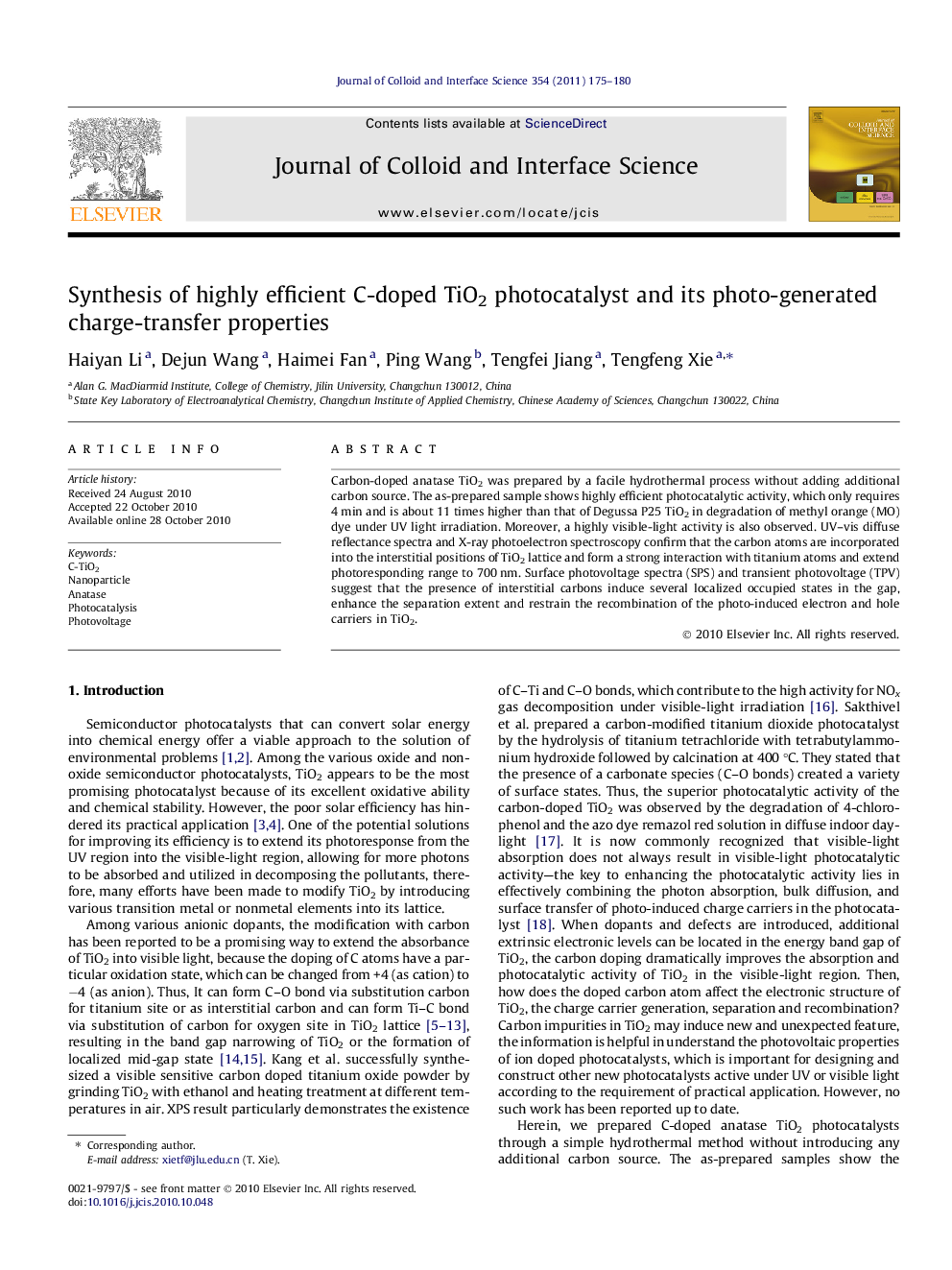| Article ID | Journal | Published Year | Pages | File Type |
|---|---|---|---|---|
| 608863 | Journal of Colloid and Interface Science | 2011 | 6 Pages |
Carbon-doped anatase TiO2 was prepared by a facile hydrothermal process without adding additional carbon source. The as-prepared sample shows highly efficient photocatalytic activity, which only requires 4 min and is about 11 times higher than that of Degussa P25 TiO2 in degradation of methyl orange (MO) dye under UV light irradiation. Moreover, a highly visible-light activity is also observed. UV–vis diffuse reflectance spectra and X-ray photoelectron spectroscopy confirm that the carbon atoms are incorporated into the interstitial positions of TiO2 lattice and form a strong interaction with titanium atoms and extend photoresponding range to 700 nm. Surface photovoltage spectra (SPS) and transient photovoltage (TPV) suggest that the presence of interstitial carbons induce several localized occupied states in the gap, enhance the separation extent and restrain the recombination of the photo-induced electron and hole carriers in TiO2.
Graphical abstractCarbon-doped anatase TiO2 nanoparticles were prepared by a facile hydrothermal process without adding additional carbon source, they demonstrated outstanding advancement over Degussa P25 in the photodegradation of MO dye.Figure optionsDownload full-size imageDownload high-quality image (229 K)Download as PowerPoint slideResearch highlights► A facile fabrication method without adding additional carbon source. ► The as-prepared C-TiO2 extended photoresponse into visible range of solar spectrum. ► Sample shows highly efficient photocatalytic activity, only 4 min in degradation of MO. ► Relationship between photo-generated charges behavior and photocatalysis is discussed.
